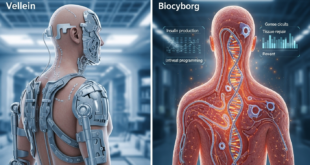Introduction
Mass casualty incidents (MCIs) pose significant challenges, requiring rapid and effective medical responses. DARPA, the Defense Advanced Research Projects Agency, has initiated the Triage Challenge (DTC) to drive innovation in addressing these complex scenarios. MCIs encompass events involving 20 or more individuals with minor injuries and can result from natural disasters, explosions, terrorist acts, and mass shootings. Nearly every event or situation that would see a huge influx of patients with major or fatal injuries, as well as numerous deaths, counts as an MCI. In such high-pressure situations, prompt and accurate triage is essential to save lives, especially when medical resources are limited compared to the overwhelming need.
The DARPA Triage Challenge: A Paradigm Shift in Emergency Response
The Defense Advanced Research Projects Agency (DARPA) has unveiled a groundbreaking challenge competition aimed at transforming the landscape of emergency medical response in both military and civilian contexts.
Traumatic injuries suffered in diverse civilian and military settings such as combat, accidents, natural disasters, and attacks on gatherings may be fatal if not quickly identified and treated. Alongside monitoring patient vitals, it’s necessary to conduct triage. This is the process of deciding which injuries are more urgent and need immediate care, and which can wait — especially in the face of limited supplies.
Medical responders use triage procedures to rapidly prioritize casualties for immediate lifesaving interventions (LSIs), such as treatment of significant bleeding and management of airway threats.
There are four different categories of triage labels, all denoted by a color system. Red tags are reserved for immediate medical care, yellow tags are severe yet capable of waiting, green tags indicate minimal injuries that are not life-threatening and black tags are used for patients who are already deceased or will be soon. Understanding the various classifications and properly identifying patients is vital to keeping many alive. Coupled with vital and smart health monitoring tools, an AI or automated system can help classify patients in a time of need. This would take some of the pressure off responders and healthcare providers, while also ensuring that patients receive the right amount of care.
Triage is difficult in any circumstance, but MCIs in complex settings pose significant capability challenges. Overwhelmingly large numbers of casualties relative to medical resources on-hand; dangers to first-responders on the scene, such as unstable infrastructure, contaminants, or hostile fire; and environmental factors that make casualties harder to find and assess, such as rubble, flooding or darkness, may prolong the response. Further complicating triage is poor understanding of early physiological response to traumatic injury.
During a catastrophe, disaster or major event that spans a huge area, it can be difficult for response teams to properly assess the situation and locate potential survivors. Major floods and other natural disasters, for example, often destroy entire communities.
Disaster recovery teams have begun using aerial surveillance technologies like drones to survey areas, find survivors and react. At the very least, the devices can be used to assess nearby surroundings and formulate an action plan. Perhaps one of the best features is that they can be controlled remotely through mobile devices and proprietary remotes.
By harnessing the power of cutting-edge technology, including real-time sensors, robots, algorithms, and data analytics, DARPA seeks to usher in a new era of efficient and rapid medical triage in mass casualty incidents (MCIs). This challenge sets the stage for medical personnel to make informed, real-time decisions using non-invasive tools and data, redefining emergency response paradigms.
- Identifying Physiological Injury Signatures: The DARPA Triage Challenge is a dynamic convergence of technology and medical expertise. Its primary objective is to identify specific physiological “signatures” of injury that can be captured by specialized sensors and complementary capabilities. These signatures will empower first responders to conduct scalable, swift, and dependable triage.
- Revolutionizing Decision-Making: In military scenarios, the challenge is exemplified by a situation where multiple casualties require medical attention. First responders face the daunting task of determining who receives immediate care and who must wait for a prolonged period. Often, this decision is made with limited tools to predict clinical trajectories. The DARPA Triage Challenge aims to leverage existing core technologies to revolutionize the field of medical triage. Advanced technologies, such as sensors, unmanned aircraft vehicles, algorithms, and real-time data analytics, are expected to play a pivotal role in achieving this goal.
- Tackling Traumatic Injuries: Traumatic injuries resulting from combat, natural disasters, accidents, or large-scale gatherings can prove fatal if not promptly identified and treated. Primary triage, traditionally reliant on hands-on evaluation, lacks scalability in mass casualty incidents. Secondary triage, which involves periodic monitoring of victims’ vital signs, can sometimes overlook early indicators of potentially life-threatening injuries.
- Exploiting Stand-Off Sensors: In times of catastrophe, locating potential survivors and assessing the situation can be challenging. Technologies such as drones and sensors play a crucial role in disaster recovery efforts. The DARPA Triage Challenge introduces a visionary approach by utilizing stand-off sensors. These sensors are deployed to rapidly and autonomously provide essential information during primary triage. This enables the efficient identification of casualties requiring urgent hands-on evaluation. Additionally, the challenge promotes continuous monitoring to predict the need for life-saving interventions during secondary triage.
Structured Competition
Launched in November 2022, the DARPA Triage Challenge is a three-year competition designed to improve emergency medical responses in both military and civilian mass casualty incidents.
- Three-Year Effort: The challenge is designed as a three-year program with three consecutive 12-month phases, running concurrently for primary and secondary triage. Each phase culminates in a challenge event.
- Multiple Competitions: The DARPA Triage Challenge includes three distinct competitions: “Primary Triage-Real World,” “Primary Triage-Virtual,” and “Secondary Triage.” It welcomes both DARPA-funded and self-funded participants.
- Collaboration and Data Access: Competitors are encouraged to collaborate with independent verification and validation teams. DARPA’s Research Infrastructure for Trauma with Medical Observations program provides clinical data to selected participants.
- $7 Million in Prizes: DARPA plans to award $7 million in competition prizes to recognize and incentivize innovative solutions.
The Triage Challenge in Detail
Primary Triage and Secondary Triage: The DTC encompasses primary and secondary triage phases. Primary triage, taking place in the initial minutes of an MCI, involves stand-off sensors, including unmanned aircraft vehicles and robots. These sensors, coupled with real-time data analysis, help medical responders evaluate a large number of casualties efficiently.
“Primary triage requires hands-on evaluation, which may be appropriate for a small number of patients, but does not scale to mass casualty incidents. In secondary triage, the standard approach is to periodically check vital signs, such as heart and respiratory rate, blood oxygen saturation, and blood pressure. These approaches may miss early indications of life-threatening injuries,” noted CDR Jean-Paul Chretien, the DARPA program manager for the effort. “The DARPA Triage Challenge seeks to enable medical responders to save lives in mass casualty incidents by exploiting stand-off sensors to rapidly and autonomously provide information needed in primary triage, and providing continued monitoring to predict need for life-saving interventions in secondary triage.”
Continuous Monitoring: The secondary triage phase occurs after primary triage and immediate lifesaving interventions have been administered. In this phase, patient status is continually monitored, enabling the identification of changes necessitating urgent medical attention. This approach enhances overall situational awareness and physiological assessment for an effective emergency medical response.
Innovation and Collaboration: The DTC encourages innovation among participants, providing a budget of $7 million divided into primary triage-real world, primary triage-virtual, and secondary triage segments, each spanning 12 months. Top-performing teams receive prizes, and collaboration with independent verification and validation teams is encouraged. Furthermore, participants can engage with DARPA’s Research Infrastructure for Trauma with Medical Observations (RITMO) program to access de-identified clinical data.
Long-Term Vision
The program’s overarching vision entails the development of technology that supports two critical stages of mass casualty incident triage. The primary stage will be facilitated by sensors on stand-off platforms, such as unmanned aircraft vehicles and robots. These sensors will be complemented by real-time data analysis, allowing medical personnel to swiftly identify casualties requiring immediate evaluation. Subsequently, the secondary stage will involve the use of non-invasive contact sensors on casualties and real-time data analysis to predict the need for life-saving interventions by medical personnel.
The DTC’s long-term vision is:
- an initial, or primary stage of MCI triage supported by sensors on stand-off platforms, such as uncrewed aircraft vehicles or robots, and algorithms that analyze sensor data in real-time to allow medical personnel to identify casualties for urgent hands-on evaluation; followed by
- a secondary stage, after the most urgent casualties have been treated, supported by non-invasive contact sensors placed on casualties and algorithms that analyze sensor data in real-time to predict need for LSIs by medical personnel.
The notional DTC primary triage setting is the first few minutes of an MCI, with automated capture and processing of data from stand-off sensors to support medical responders in evaluating an overwhelming number of casualties. Competitors will be tested in physical or virtual simulations of MCIs. The notional DTC secondary triage setting is a casualty collection point, medical facility, or emergency department, after primary triage and immediate LSIs have been administered. In the secondary triage setting, patient status is further assessed and continuously monitored to identify changes requiring urgent intervention. Competitors will have access to de-identified clinical data from DARPA’s RITMO program for use during the competition.
Conclusion
The DARPA Triage Challenge represents a bold initiative that holds the potential to reshape the landscape of emergency medical response. By leveraging technology and fostering innovation, DARPA aims to empower medical personnel to make informed, swift decisions that can save lives in mass casualty incidents. This challenge embodies a critical step toward enhancing preparedness and improving outcomes, both in military and civilian contexts. DARPA is expected to share further details about this initiative in a forthcoming Broad Agency Announcement, with a virtual event scheduled for proposers on November 29.
“Accurate triage is difficult in any setting, but particularly after a mass casualty incident that involves dozens, hundreds, or even thousands of patients. Humans alone struggle under the chaos and stress – research has found that in mass casualty settings recommended triage methods are often not used or inaccurately applied. DARPA’s work to bring technology to triage to improve the capacity and accuracy of triage in both the battlefield and civilian settings is critical to improve our Nation’s preparedness.”
“The DARPA Triage Challenge will gather communities with expertise in triage and emergency medical response, tactical combat casualty care, trauma physiology and a diverse array of physiological signatures and sensor and algorithm technologies that will continue to deliver innovative technologies that support medical responders beyond the Challenge,” explained U.S. Navy Commander and DTC Program Manager Jean-Paul Chretien.
References and Resources also include:
 International Defense Security & Technology Your trusted Source for News, Research and Analysis
International Defense Security & Technology Your trusted Source for News, Research and Analysis

